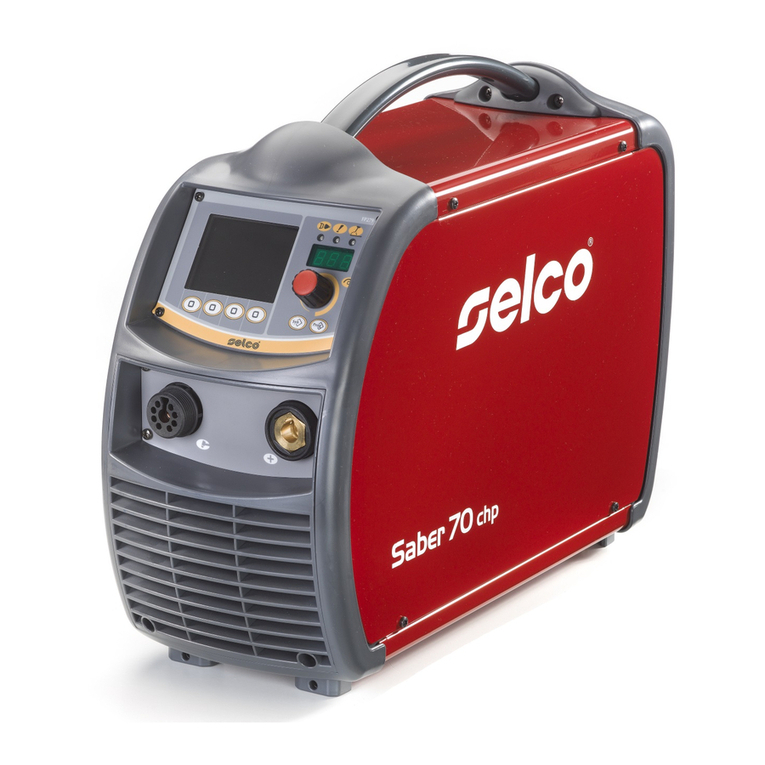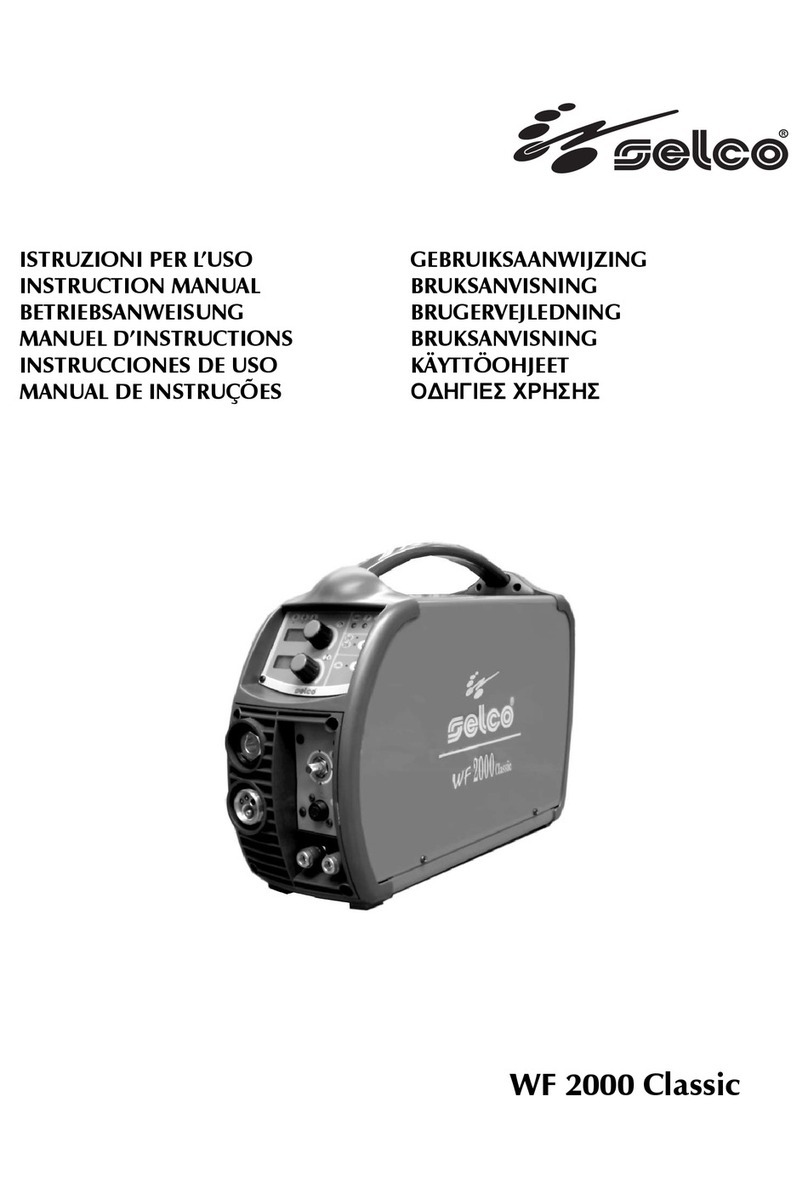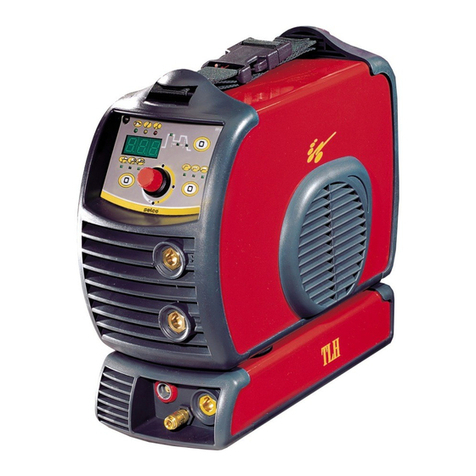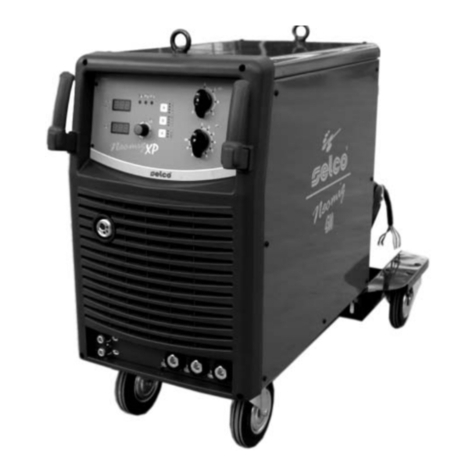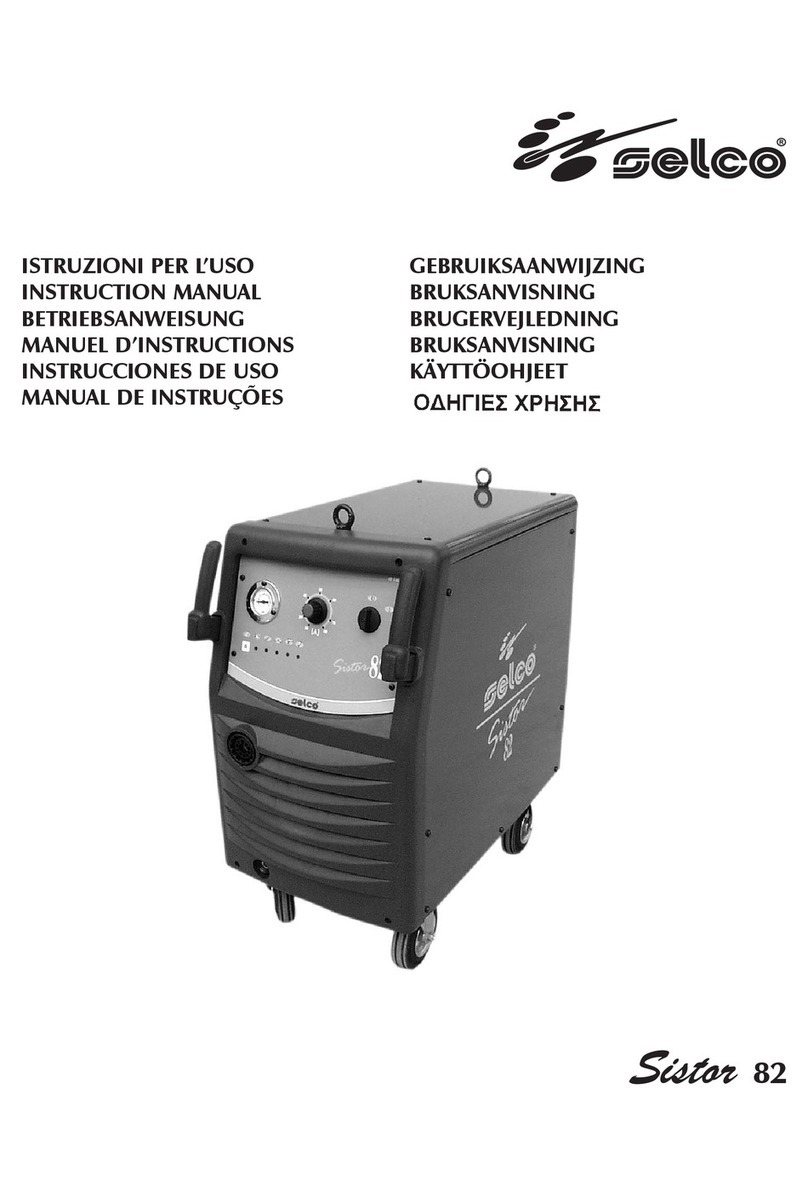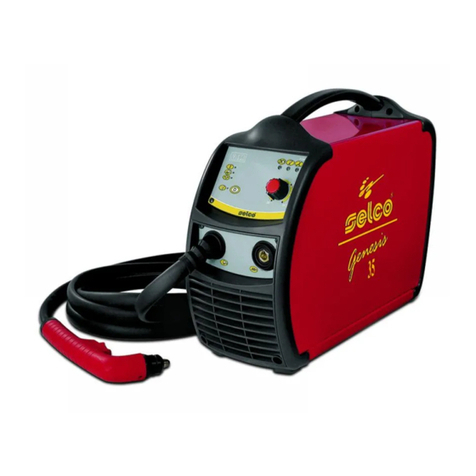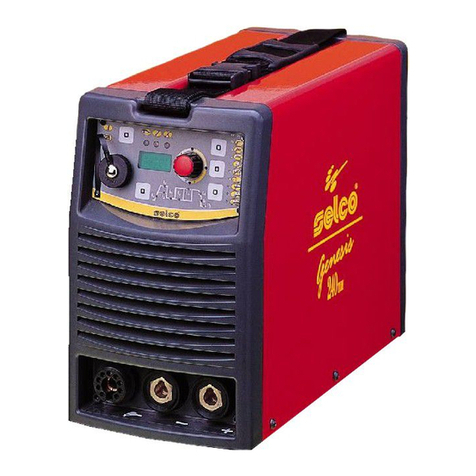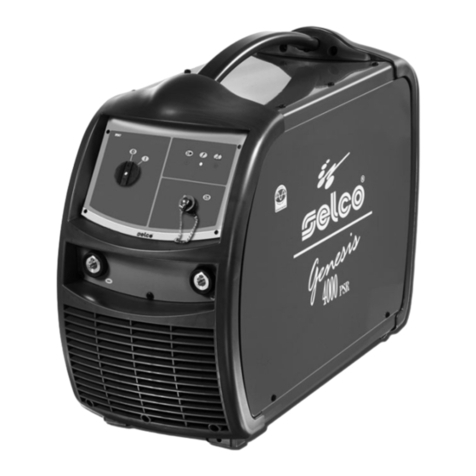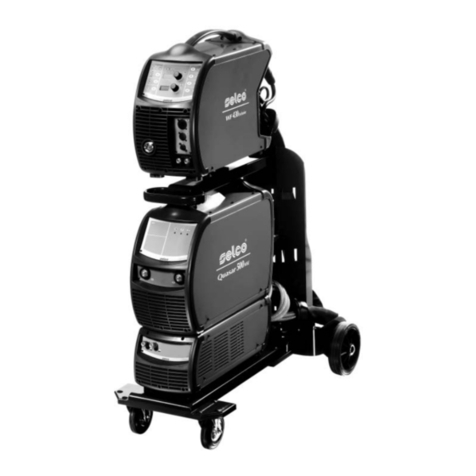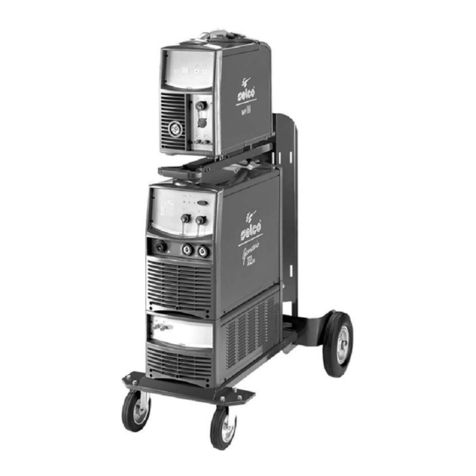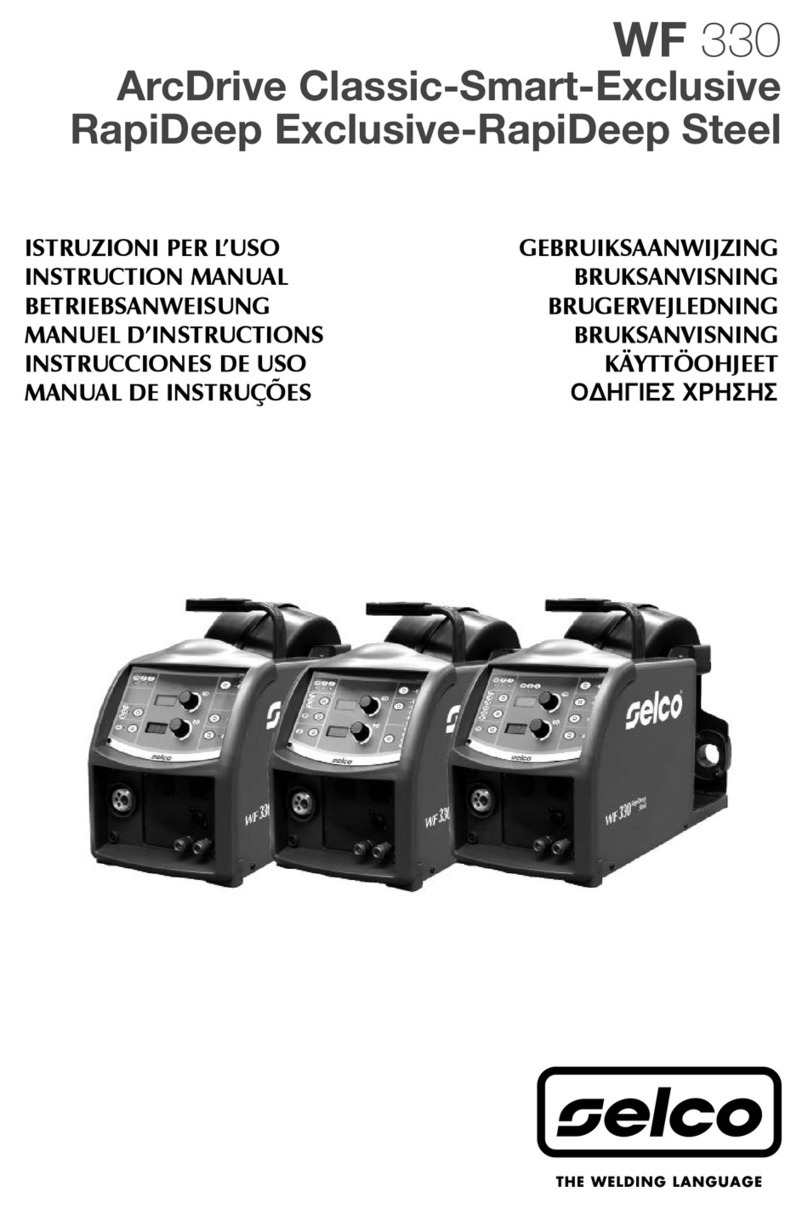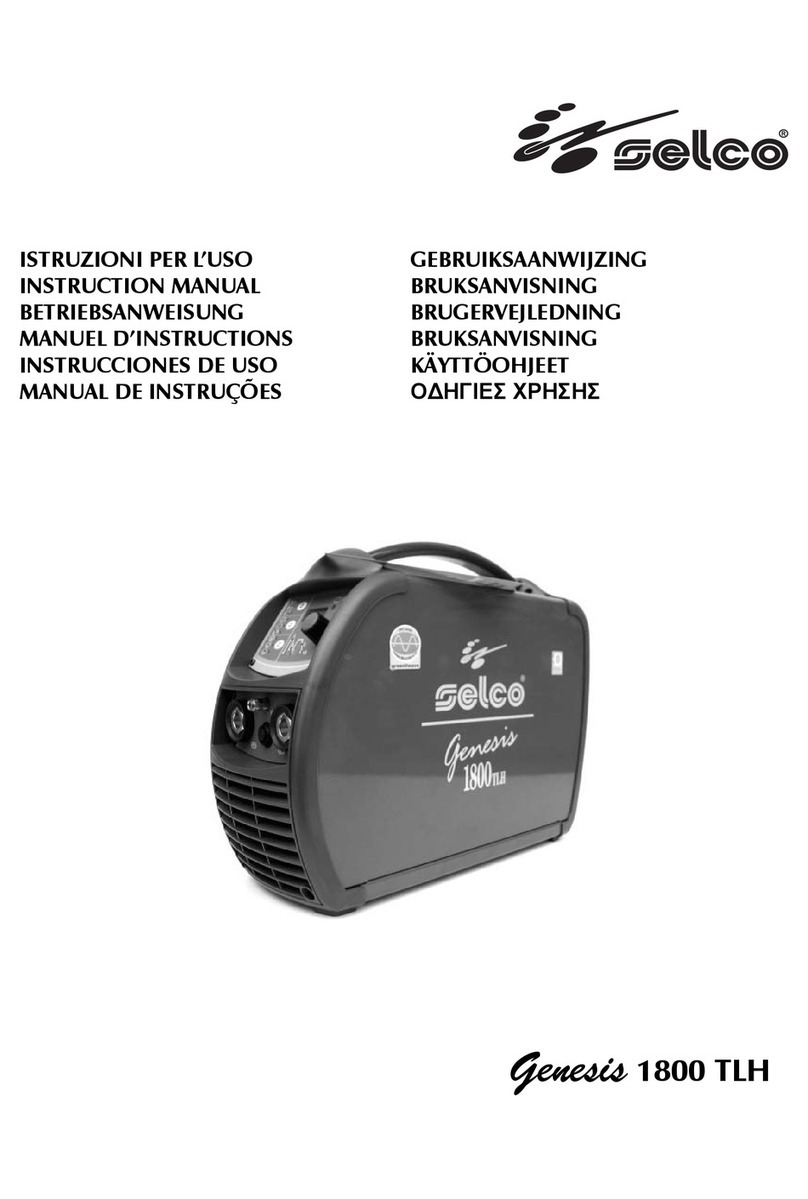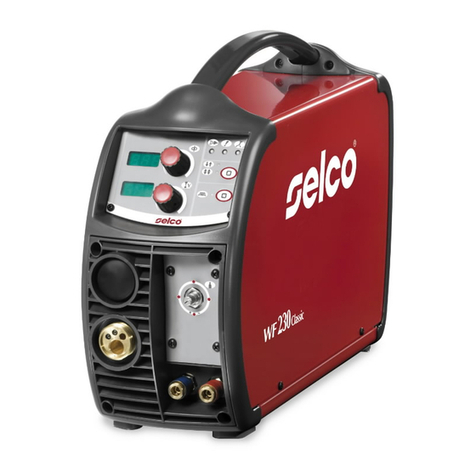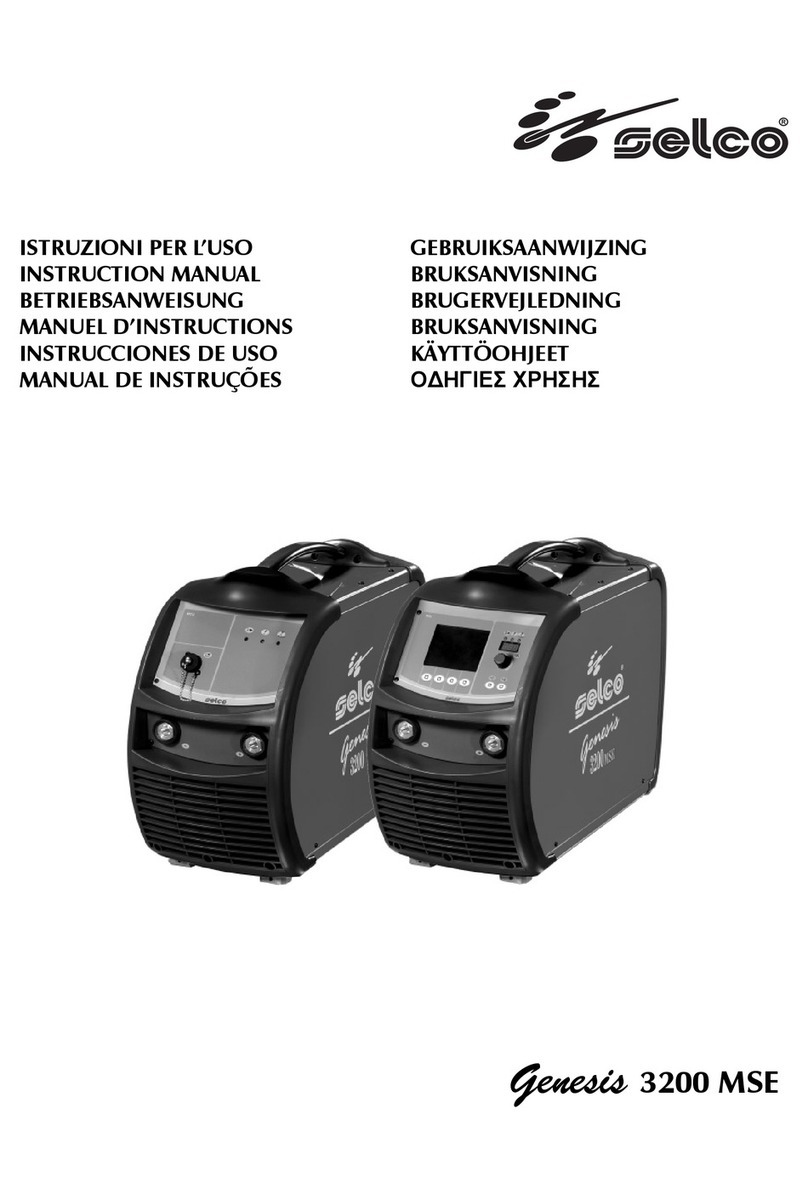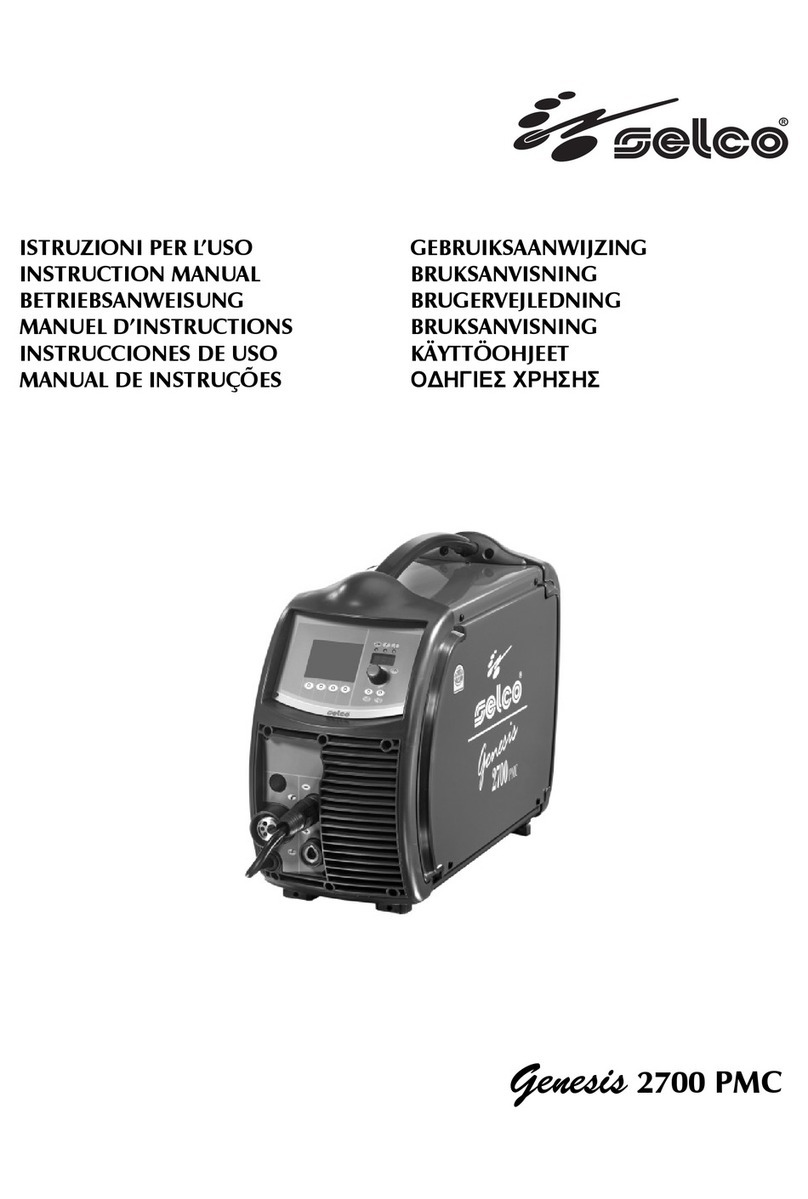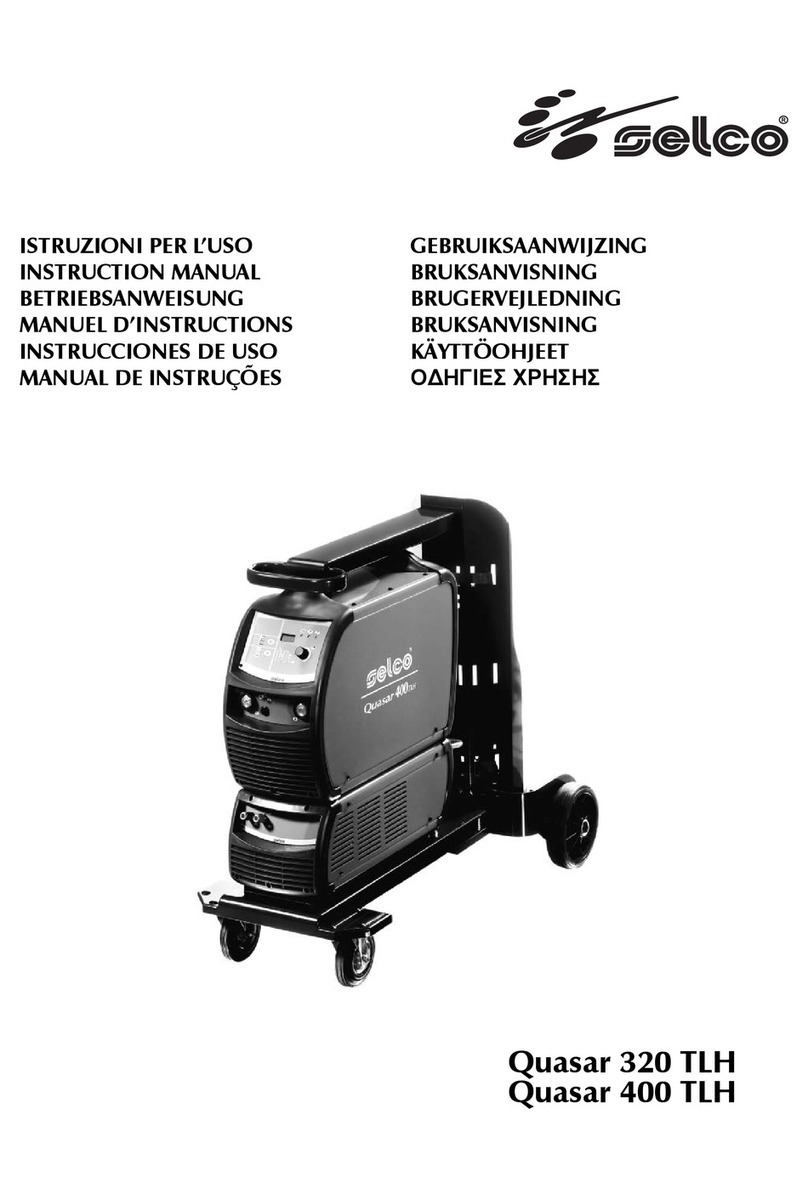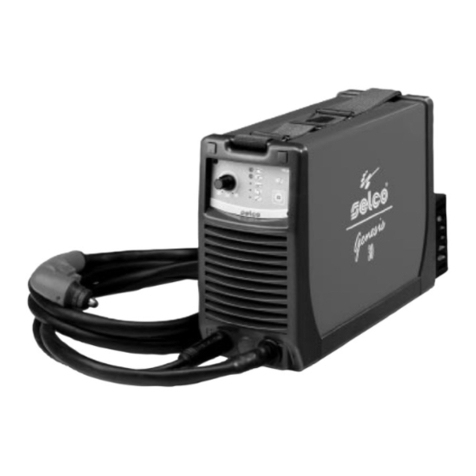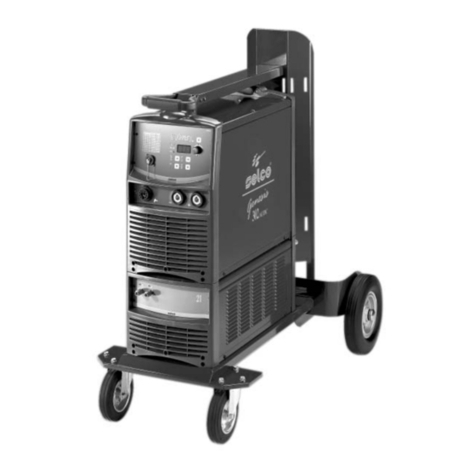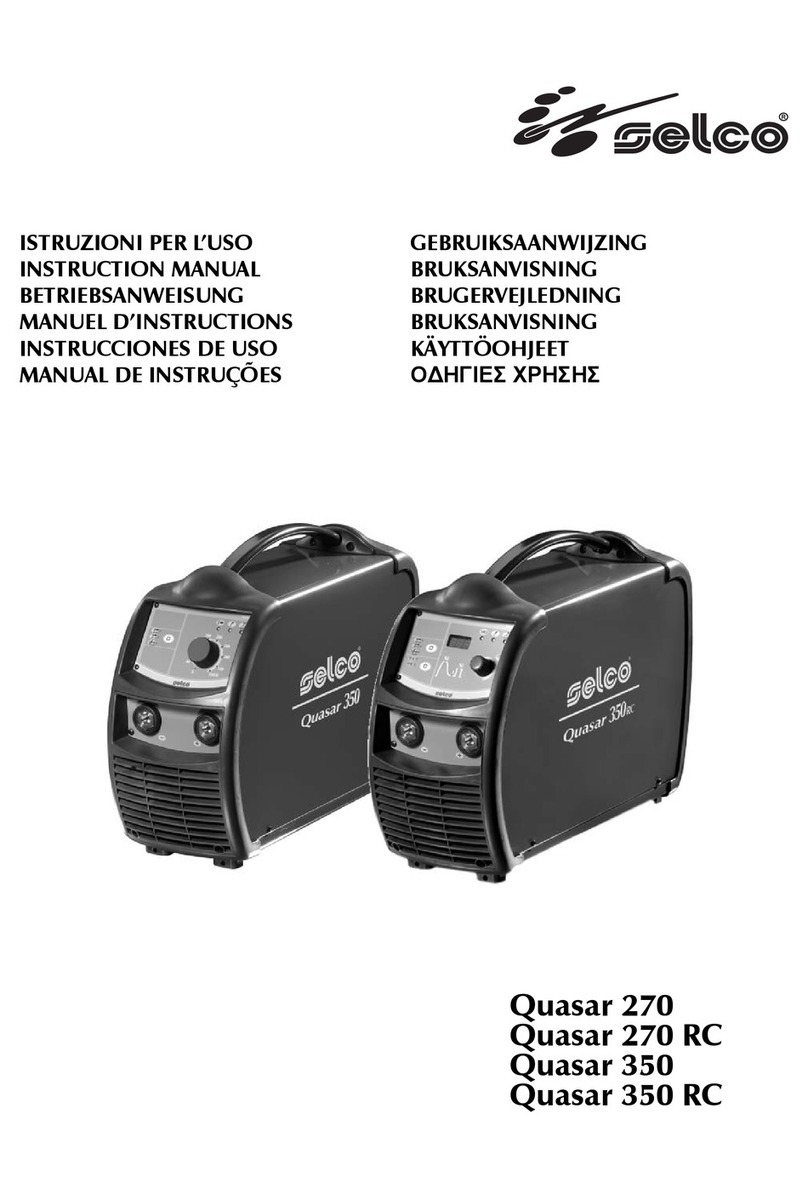Power supply voltage
(50/60Hz)
Max. absorbed power (x=40%)
Max. absorbed current (x=40%)
Absorbed current (x=100%)
Efficiency (x=40%)
Power factor (x=40%)
Cosj(x=40%)
Welding current (x=40%)
(x=60%)
(x=100%)
Adjustment range
Open-cicuit voltage (limited)
Protection rating
Insulation class
Construction standards
Dimensions (lxpxh)
Weight
3x400V
+10% -10%
8.4 KW
12.9 A
7.9 A
0.84
0.94
0.99
240 A
185 A
160 A
6-240 A
59 V
IP23
H
EN60974-1/EN50199
179x430x290 mm
15.4 Kg
2) PURPOSE OF THE MANUAL
The purpose of this manual is to provide authorised technical ser-
vicing centres the information required for repairing Genesis 240
and Genesis 240 TLH (see NOTE *).
To avoid serious damage to people and things, this manual must
be used strictly by qualified technicians.
What is involved in a repair job?: identifying the faulty part - as
this part is included in the list of available spare parts - and
replacing it according to the procedures described below.
If an electronic card is faulty, repair entails replacing the card
and not replacing the faulty electronic component on the card
itself.
If trouble cannot be solved by observing the procedures in the
manual, the machine must be sent back to SELCO.
We suggest two diagnosis procedures on two levels: at the first
level, simple initial action instruments/tools are used, at the
second level, more sophisticated instruments/tools are used.
By taking into account the training level of its technicians and its
available instruments, each service centre can decide whether
to use the first or second procedure.
The order of the subjects in this manual is based on a logic that
gradually provides the repair technician with knowledge of the
machine. We therefore advise you to follow the suggested
order, by starting at the beginning.
* NOTE : the information contained in this manual does not
apply to the first versions of the machine as specified
in point 10.2.
Purpose of the manual - Machine technical specifications 85
WU15
3) MACHINE TECHNICAL SPECIFICATIONS .
GENESIS 240
GENESIS 240 TLH
Power supply voltage
(50/60Hz)
Max. absorbed power in TIG
(x=40%)
Max. absorbed current in TIG
(x=40%)
Absorbed current in TIG
(x=100%)
Max. absorbed power in MMA
(x=40%)
Max. absorbed current in MMA
(x=40%)
Absorbed current in MMA
(x=100%)
Efficiency (x=40%)
Power factor
Cosj
Welding current (x=40%)
(x=60%)
(x=100%)
Adjustment range
Open-cicuit voltage (limited)
Protection rating
Insulation class
Construction standards
Dimensions (lxpxh)
Weight
3x400V
+10% -10%
6.1 KW
9.3 A
5.4 A
8.5 KW
12.9 A
7.9 A
0.84
0.94
0.99
240 A
185 A
160 A
6-240 A
81 V
IP23
H
EN60974-1/EN50199
179x430x293 mm
17.4 Kg
Power supply voltage
(50/60Hz)
Nominal input current
Capacity of reservoir
Cooling power
Protection rating
Dimensions (lxpxh)
Weight with liquid
1x230V
+ 10% -10%
0.8 A
1.7 l
900 W
IP23
179x430x160 mm
9.5 Kg
Above data are referred to environment al 40°C.
